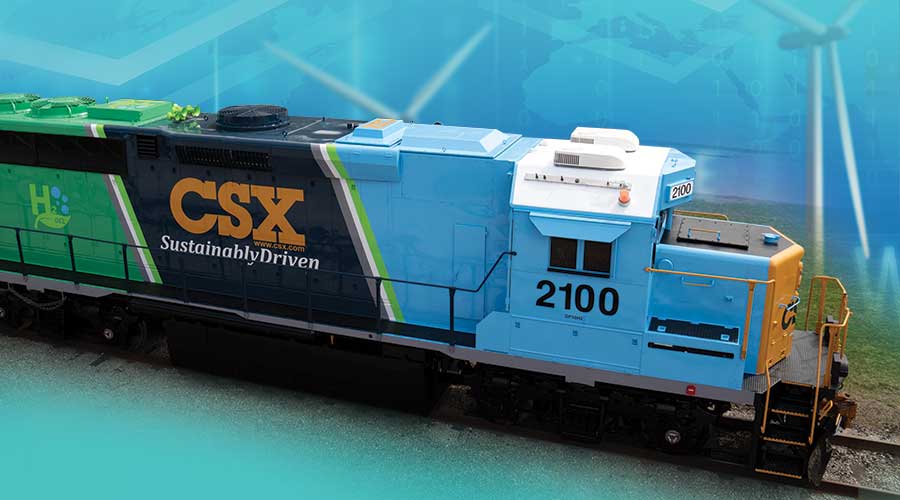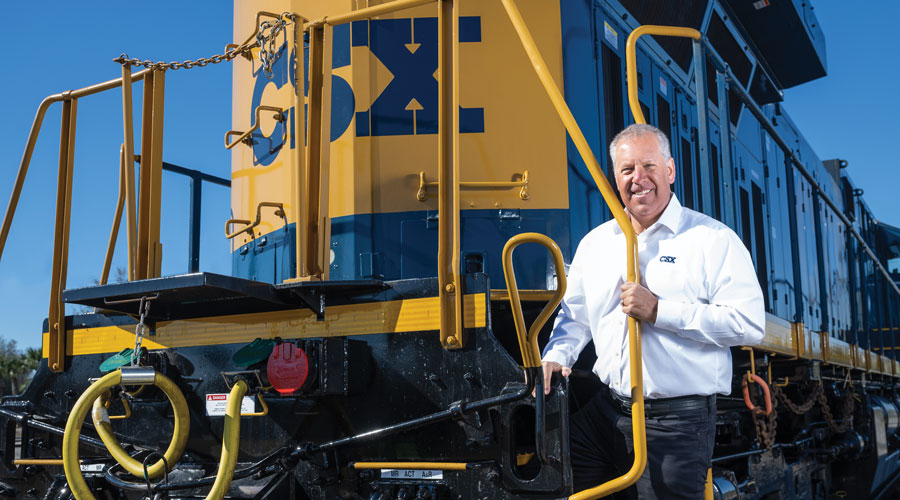Stay updated on news, articles and information for the rail industry
May 2022
Rail News: Federal Legislation & Regulation
From the Editor: Step 1: Stepping it up on the service front

By Pat Foran, Editor
From the pandemic to supply-chain snarls to worker shortages to winds of economic change, the events of the past couple years have done a number on a lot of industries, including freight transportation. Railroads haven’t been immune. Witness CSX, where a range of factors have contributed to a more than two-year-long erosion in operational performance, as Managing Editor Jeff Stagl reports this month.
CSX execs say customers and would-be customers want to ship more by rail, so the performance issues couldn’t come at a worse time. CSX leaders believe the railroad will be back on the better-service beat, and better prepared to handle the demand, later this year. As CSX President and CEO Jim Foote puts it: It’s the Class I’s “time to shine.”
Given the bright light currently shining on Class Is, it’s time for all of them to step it up on the service front.
On April 22, the Surface Transportation Board issued a notice of proposed rulemaking to amend its emergency service rules to provide relief for shippers in situations that require immediate relief. The proposed rule would clarify that the STB can act on its own initiative to direct emergency rail service, and to establish an accelerated process for acute service emergencies.
In recent weeks, rail service has become even more unreliable, with stakeholder concerns focusing on crew shortages and inability to move trains, STB officials said in a press release.
Regulators hear shippers’ concerns
On April 26-27, the STB held a hearing to address the complaints, as Senior Associate Editor Julie Sneider reports on RailPrime, our premium digital subscription offering.
“The supply-chain crisis has left us moving more goods with a smaller workforce, leading to higher costs and longer delays,” said U.S. Transportation Secretary Pete Buttigieg, the first to speak at the hearing, as Sneider reports. “American freight rail has lost a significant amount of its market share as well as its workforce, which has been cut 20% when compared to before the pandemic.”
The cuts are deeper than that, STB Chairman Martin Oberman said during the hearing. Over the past six years — or since Class Is have adopted precision scheduled railroading operating plans — the large roads collectively have cut their workforce by 29%, he said.
Addressing rail-worker turnover is the first step railroads need to take to confront supply-chain challenges, Buttigieg said.
Class Is certainly agree they need to hire more workers. CSX, for one, is adding 100 train and engine-service (T&E) workers each month and expects T&E staffing to be fully restored by the third quarter, Stagl reports.
Whether that’ll be soon enough to help minimize rail-service delays, or help CSX capture more business this year, remains to be seen. What’s clear, though, is regulators are listening, and listening closely, to rail customers’ concerns — about the supply chain, about service, about reciprocal switching. And they’ll be listening — and monitoring Class Is’ actions — all summer long.
Keywords
Browse articles on CSX STB James Foote rail serviceContact Progressive Railroading editorial staff.


 2025 MOW Spending Report: Passenger-rail programs
2025 MOW Spending Report: Passenger-rail programs
 Gardner steps down as Amtrak CEO
Gardner steps down as Amtrak CEO
 Guest comment: Oliver Wyman’s David Hunt
Guest comment: Oliver Wyman’s David Hunt
 Women of Influence in Rail eBook
Women of Influence in Rail eBook
 railPrime
railPrime





